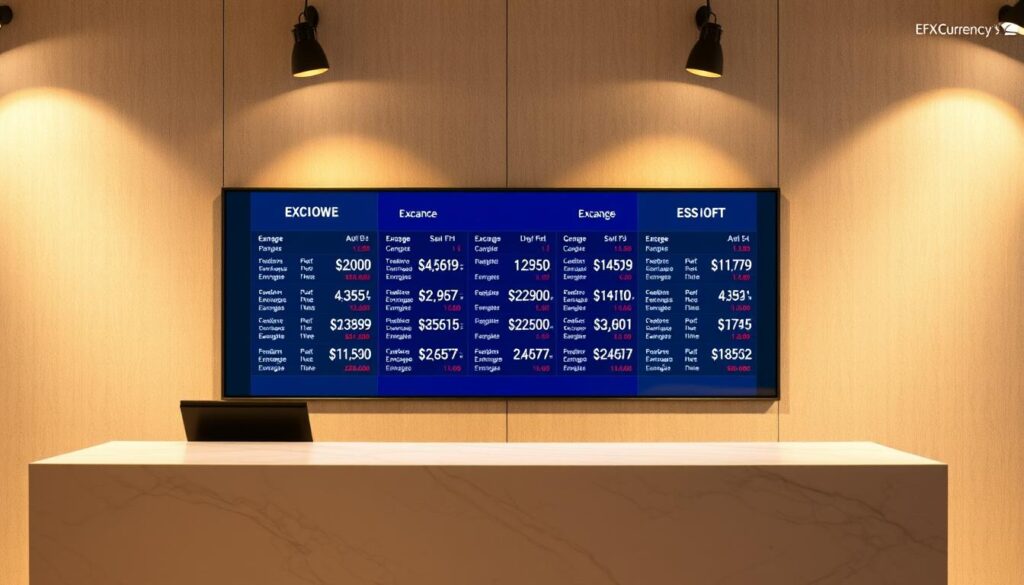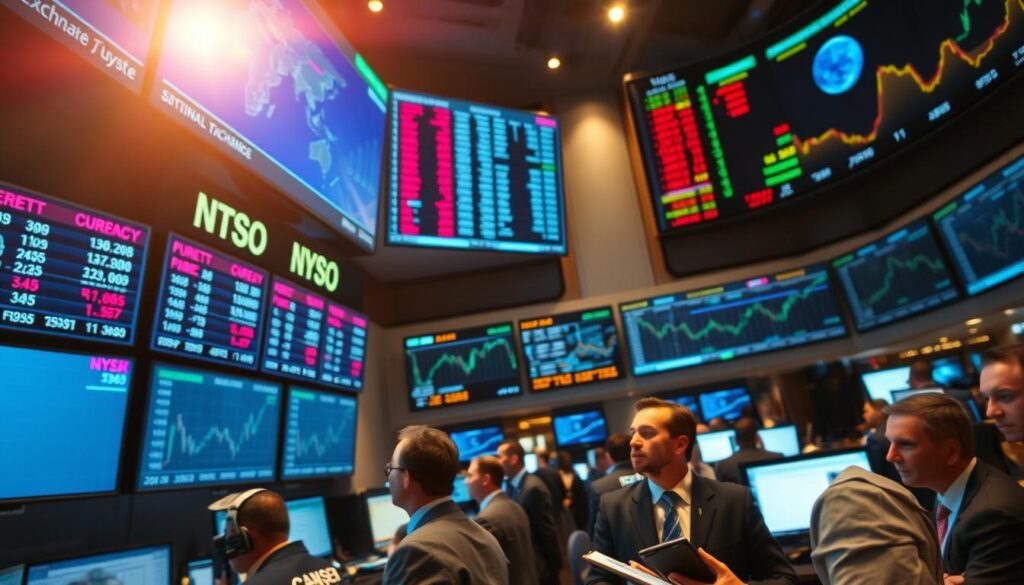The foreign exchange landscape dominates the financial market world, with over $7.5 trillion traded daily. Unlike stocks or commodities, this decentralized system operates 24 hours across global sessions, offering unique opportunities for traders in Hong Kong and beyond.
Most activity involves speculation rather than practical currency conversion. Major institutions like JPMorgan Chase and Deutsche Bank provide liquidity, while platforms enable weekend trading on key pairs. Participants navigate spot and futures markets through regulated brokers under oversight from bodies like ASIC.
Understanding core components—currency pairs, pips, and leverage—forms the foundation for effective strategies. From hedging correlated instruments like EUR/USD to managing risk, this guide explores actionable approaches for today’s dynamic environment.
What Are Forex Markets?
Unlike traditional stock exchanges, currency markets operate without a central hub. This decentralized OTC market lets participants trade currencies directly, powering the *financial market world*. Over $7.5 trillion changes hands daily, dwarfing crypto’s $100 billion volume.
Definition and Global Significance
The foreign exchange system enables cross-border trade and investment. Since 1971, when the Bretton Woods system collapsed, exchange rates float freely. Central banks like the Federal Reserve and ECB shape rates through policies like quantitative easing.
Key Differences from Other Markets
Stocks trade on exchanges like the NYSE, but currencies use broker networks. Trading runs 24 hours weekdays, spanning Tokyo to New York sessions. Liquidity varies—EUR/USD moves smoothly, while exotics like USD/TRY face wider spreads.
The U.S. dollar dominates, backing *63% of global reserves*. Interest rate gaps drive trades, like borrowing JPY (low rates) to buy AUD (high rates). These “carry trades” highlight how macroeconomics fuels currency shifts.
How Forex Trading Works
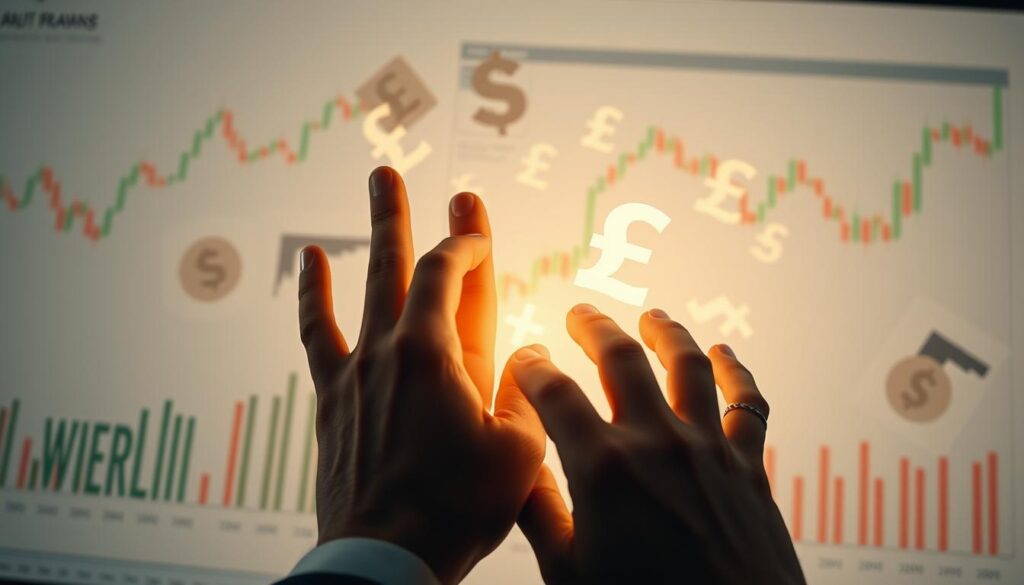
Currency trading revolves around pairs, where one unit is exchanged for another. The process hinges on understanding pricing, execution speed, and market types. Whether hedging or speculating, traders navigate these mechanics daily.
The Basics of Currency Pairs
Every trade involves a currency pair, like EUR/USD. The first currency (EUR) is the base, and the second (USD) is the quote. If EUR/USD = 1.08, €1 buys $1.08.
Major pairs (e.g., USD/JPY) have tight spreads, while minors (USD/SGD) cost more to trade. Brokers like IG offer spreads as low as 0.6 pips on EUR/USD.
Understanding Exchange Rates and Liquidity
The exchange rate shifts with supply and demand. High-liquidity pairs (EUR/USD) move smoothly, while exotics (USD/TRY) lag. Platforms like MetaTrader 4 execute trades in 47ms—critical for fast-moving rates.
Liquidity tiers matter. A 50-pip move on GBP/JPY with a standard lot (100,000 units) equals $500 profit or loss.
Spot, Forward, and Futures Markets Explained
Spot markets settle trades in one day (T+1). Futures (e.g., CME contracts) lock in prices for future dates. Forwards are custom OTC agreements, popular for hedging.
Rollover rates apply to overnight positions, affecting strategies like carry trades. Arbitrageurs exploit price gaps between banks using real-time order books like LMAX’s.
Key Forex Trading Terms Every Beginner Should Know
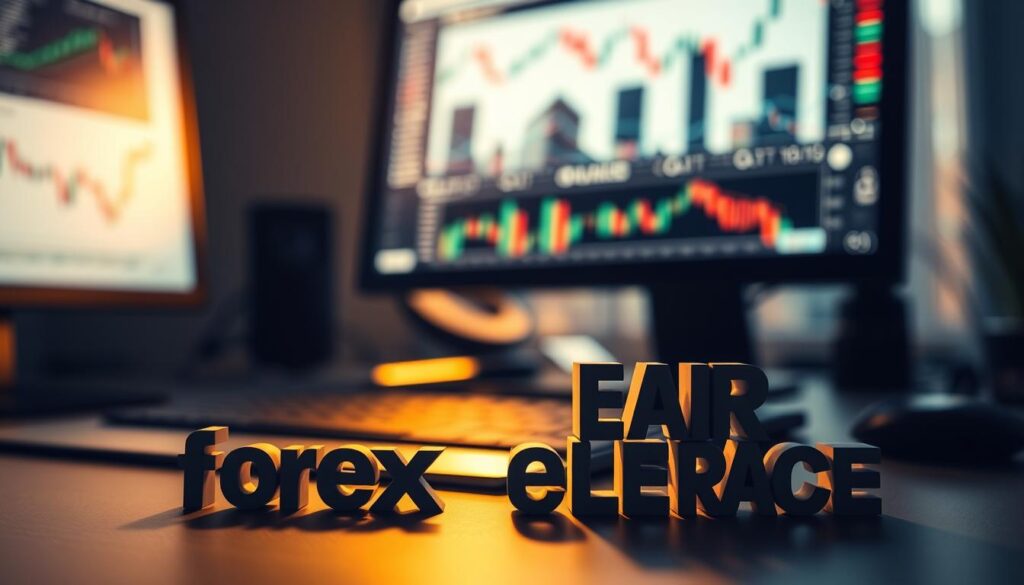
Mastering core terminology separates successful traders from beginners in currency trading. These concepts form the backbone of every strategy, from calculating profits to managing risk.
Pips and Pipettes: Measuring Price Movements
A pip is the smallest price move, usually 0.0001 for pairs like EUR/USD. For JPY crosses (e.g., USD/JPY), it’s 0.01. A pipette equals 0.1 pip, offering finer precision.
One pip on EUR/USD with a standard lot (100,000 units) equals $10. Traders track these微小 shifts to gauge entry/exit points.
Lots: Standardizing Trade Sizes
Lots control the amount traded. Standard lots are 100k units, mini lots 10k, and micro lots 1k. Smaller sizes reduce exposure, ideal for testing strategies.
Brokers like IG offer demo accounts with $20,000 virtual funds to practice lot sizing without real risk.
Leverage and Margin: Risks and Rewards
Leverage amplifies gains (and losses). A 30:1 ratio means $1 controls $30. Offshore brokers may offer 500:1, but ASIC caps majors at 30:1 for safety.
Margin is the collateral needed to open a position. If equity falls below 50% (maintenance margin), brokers issue margin calls. ESMA’s negative balance protection shields traders from owing more than deposited.
Warning: Over 70% of retail accounts lose money due to over-leverage. Always weigh risk-reward ratios—1:3 strategies often outperform 1:2.
Major Factors Influencing Forex Markets

Global currency values fluctuate based on powerful economic forces. From central bank decisions to unexpected crises, these drivers shape trading opportunities and risks worldwide.
Central Bank Policies and Interest Rates
The Federal Reserve’s dot plot forecasts contrast with the ECB’s forward guidance, creating divergence in EUR/USD trends. A 0.25% rate hike can swing the exchange rate by 100+ pips within hours.
In 2022, the Turkish lira collapsed 40% after unorthodox rate cuts. Such interventions highlight how policies override *market sentiment*.
Economic Indicators and News Events
US Core CPI and Eurozone HICP reports trigger volatility. The Non-Farm Payroll (NFP) breakdown—payrolls, unemployment, wages—often moves USD pairs 50 pips instantly.
During the 2020 pandemic, the VIX index spiked alongside USD/JPY drops. Safe-haven flows exemplify crisis-driven *currency* shifts.
Market Sentiment and Geopolitical Risks
Brexit’s 2016 vote slashed GBP/USD by 20% overnight. Tools like BlackRock’s risk dashboard now track such events in real time.
SWIFT data shows the USD dominates 42% of payments. Petro-dollar recycling—where oil profits buy US assets—further cements its role.
Emerging markets face unique pressures. COT reports reveal institutional bets before crises, like the 2022 lira crash.
Common Forex Trading Strategies for Beginners

Beginners should focus on simple yet effective methods to build confidence. The right strategy depends on time commitment, risk tolerance, and market conditions. Below are three approaches tailored for new traders.
Day Trading vs. Swing Trading
Day traders open and close positions within hours, capitalizing on short-term movements. This requires monitoring charts for 6–8 hours daily. Tools like MACD crossovers on EUR/USD 4H charts help spot entries.
Swing traders hold positions for days, analyzing weekly trends. They avoid the stress of constant screen time but face weekend gap risks. IG’s Saturday trading feature helps manage this.
Trend-Following Strategies
Studies show a 70% success rate for trend-following systems. Traders identify directions using moving averages or the Average True Range (ATR) for volatility-adjusted stops.
Example: A rising 50-day MA on GBP/USD suggests buying pullbacks near Fibonacci retracement levels. Always pair this with risk management rules like 1:3 reward ratios.
Breakout and Pullback Approaches
Breakouts occur when prices surpass key resistance. Traders confirm validity with volume spikes or candlestick patterns. False breakouts are common during ECB press conferences—slippage can erode profits.
Pullbacks offer safer entries. For instance, AUD/USD often retraces 38%–50% before resuming its trend. Correlation with iron ore prices adds confirmation.
Technical Analysis in Forex Trading
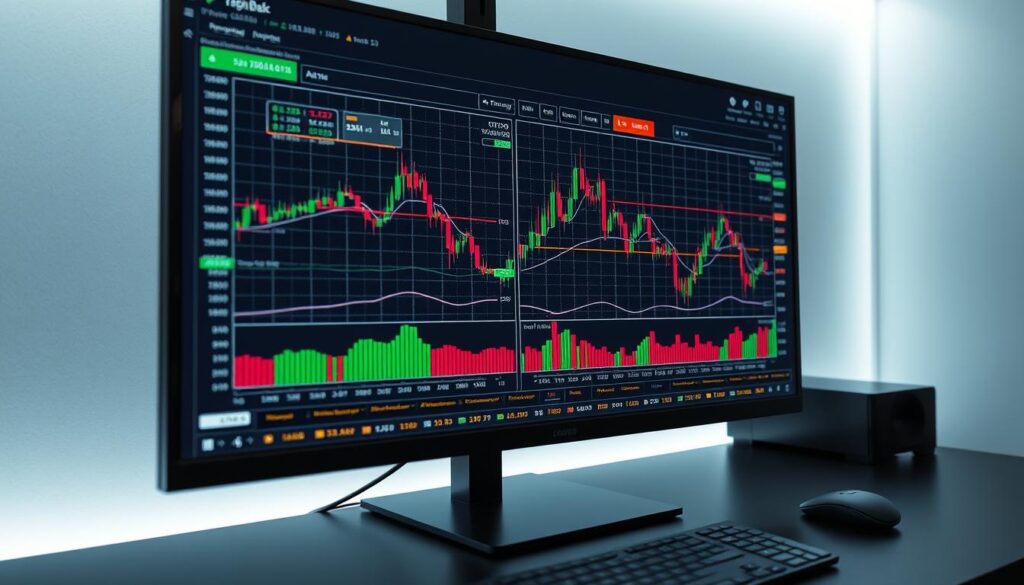
Price action tells a story—technical analysis deciphers it. By studying charts and indicators, traders spot trends and make informed decisions. This approach works across all sessions, from London to Hong Kong.
Reading Charts and Patterns
Different chart types reveal unique insights. Heikin-Ashi smooths noise, while Renko bricks filter minor movements. Candlestick patterns like engulfing or doji signal reversals.
Harmonic patterns, such as Bat or Crab formations, predict turning points. Multi-timeframe analysis confirms trends. For example, USD/JPY weekly charts paired with 4H Ichimoku clouds improve accuracy.
Popular Indicators
Key tools include:
- RSI (14-period on 4H charts) identifies overbought/oversold zones.
- MACD histogram divergence signals trend shifts.
- Bollinger Band squeezes on USD/CAD highlight volatility breaks.
The 200-day SMA acts as a trend filter. VWAP tracks institutional order flow, useful in liquid sessions.
Support and Resistance Levels
These zones mark where price often stalls or reverses. Volume profile analysis reveals high-liquidity areas. London session data often shows stronger levels than New York.
Backtest with 100+ trades to validate reliability. Combine with risk management, like 1:3 reward ratios, for consistent results.
Fundamental Analysis for Currency Markets
While technical analysis focuses on charts, fundamental analysis examines real-world factors that drive currency movements. This approach helps traders understand why prices change and predict future trends.
Interpreting Economic Calendars
Economic calendars highlight key events that move exchange rates. Traders should focus on high-impact data like:
- Central bank meetings (Fed, ECB decisions)
- Inflation reports (CPI, PCE)
- Employment figures (NFP, unemployment rates)
The Big Mac Index shows purchasing power parity—when a burger costs $5.50 in the US but ¥400 in Japan, it suggests JPY may be undervalued.
Interest Rate Differentials and Carry Trades
Currencies with higher interest rates often attract more buyers. For example, borrowing low-yielding JPY to invest in high-yielding TRY was popular until Turkey’s 2022 crisis.
Key calculations include:
- Uncovered interest rate parity (expected future spot rates)
- Covered interest rate parity (forward contracts pricing)
Current account deficits also matter. Australia’s iron ore exports support AUD value, while trade gaps pressure emerging market currencies.
Long-Term vs. Short-Term Fundamental Factors
Short-term traders watch news events, but long-term investors analyze deeper trends:
- Sovereign CDS spreads measure country risk (higher = weaker currency)
- MSCI EM Index correlations show how stocks affect FX
- COFER data reveals reserve allocations (USD still dominates at 63%)
China’s CIPS system challenges SWIFT in cross-border payments, potentially reshaping global exchange flows long-term.
Risk Management in Forex Trading

Smart traders know that protecting capital is just as important as making profits. Proper risk management turns volatile trades into sustainable strategies. Without it, even winning streaks can vanish quickly.
Setting Stop-Loss and Take-Profit Orders
Stop-loss orders limit losses by closing trades at preset levels. For example, placing a stop 2x the Average True Range (ATR) adjusts for volatility. Take-profit locks in gains before markets reverse.
ASIC’s negative balance protection ensures traders never owe more than their account amount. Tools like trailing stops automate adjustments as prices move favorably.
Position Sizing and Risk-Reward Ratios
The 2% rule caps per-trade risk at 2% of the account balance. Compare sizing methods:
- Kelly Criterion: Matches bet size to win probability.
- Fixed Fractional: Allocates equal amounts per trade.
Aim for 1:3 reward ratios—$1 risked for $3 potential gain. Correlation checks prevent overexposure (e.g., EUR/USD and GBP/USD often move together).
Managing Emotions and Psychological Aspects
Fear and greed sabotage discipline. Common biases:
- Confirmation bias: Ignoring opposing signals.
- Recency bias: Overweighting latest events.
Biofeedback training helps maintain focus. Journals track metrics like win rates to identify emotional triggers. Never risk money needed for essentials.
Choosing a Forex Broker and Trading Platform
Selecting the right broker is crucial for anyone looking to start trading successfully. A trustworthy partner ensures fair pricing, security, and access to tools. Key factors include regulation, costs, and platform features.
Regulatory Considerations and Safety
Always verify licenses from authorities like ASIC (Australia) or the SFC (Hong Kong). These agencies enforce client fund segregation and anti-fraud measures. Avoid unregulated brokers—Alpari UK’s 2015 collapse left traders unable to withdraw funds.
Additional safeguards include:
- Two-factor authentication to prevent unauthorized access.
- FSCS or CIPF insurance covering losses up to $500,000 if a broker fails.
Comparing Spreads and Fees
ECN brokers offer raw spreads (e.g., 0.1 pips on EUR/USD) but charge commissions. STP models bundle costs into wider spreads. For frequent buy sell actions, look for:
- Swap-free accounts for Sharia compliance.
- Low overnight fees if holding positions long-term.
Cryptocurrency deposits may reduce transaction fees but lack chargeback options.
Demo Accounts vs. Live Trading
Demo accounts simulate forex trading with virtual funds—ideal for testing strategies. However, they often ignore slippage and liquidity gaps. Transition to live accounts gradually:
- Start with micro lots (1,000 units) to limit risk.
- Use VPS hosting for algorithmic trading to avoid downtime.
Platforms like MetaTrader 4 provide Depth of Market (DOM) tools for advanced order analysis.
Your First Steps in Forex Trading
Starting a trading journey requires careful planning. Beginners should open accounts with regulated brokers, complete KYC checks, and fund with the minimum deposit—often $100 or less. Micro lots (1,000 units) help limit risk while learning.
Prioritize high-impact economic calendar events like Fed rate decisions. Use correlation matrices to avoid overexposure to similar assets. Set realistic targets, such as 10% annual growth, and track performance monthly.
Hong Kong traders benefit from profit tax exemptions. Engage with communities like Forex Factory for insights. Continuous education through courses (CMT/CFTe) sharpens skills. Always test strategies in demo accounts for six months before going live.
Effective risk management separates winners from losers. Audit brokers for slippage and execution speed. With discipline and the right tools, anyone can turn small money into steady gains.

